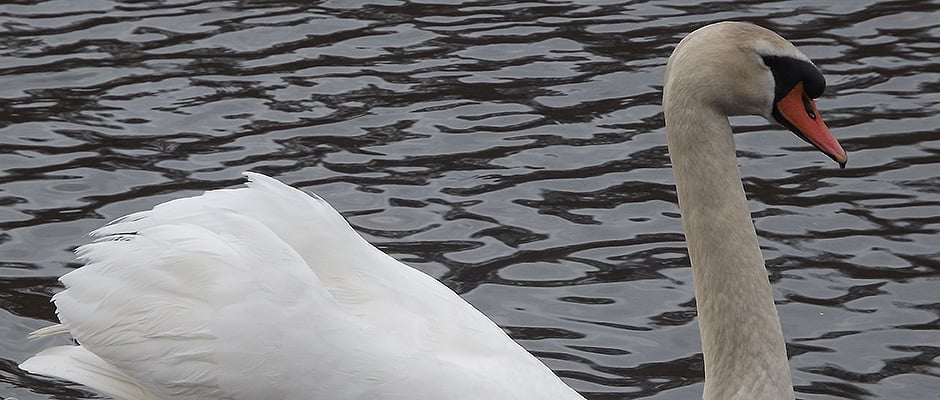Share this article
Mute Swan Adoption Might be an Option
While you may have thought about adopting a dog or a cat as a pet, you probably never considered adopting a swan.
But in New York, individuals as well as communities and non-profit organizations, might have an option to adopt invasive mute swans (Cygnus olor) under a revised state management plan.
Mute swans in New York are a rapidly reproducing invasive species that competes with native waterfowl and other birds for food and habitat. While a preliminary plan by the Department of Environmental Conservation (DEC) focused on mute swan population control through egg-addling or lethal control, their revised state management plan released last month allows for people and community groups to adopt the birds into managed settings.
“The controversy is that people think we’re going to kill a lot of swans,” said Bryan Swift, DEC Waterfowl Specialist. “That is not the case at all. We just want to move them to areas where they have less impact and where they would be of less concern. We are willing to be as flexible as we can.”
Under the proposed plan, individuals or groups that adopt the birds must prevent them from reproducing or spreading to other areas. If adopted, the swans would have to be fenced or have their wings clipped. Further, the plan calls for agency measures to prevent the birds from reproducing such as allowing the adoption of only single-sex pairs, surgical sterilization, or destroying any eggs that are laid.
If individuals want to adopt the birds, they must have a facility for them, and they also must be willing to commit to long-term care. “We normally don’t allow people to have swans for personal use,” Swift said. “But if it’s done in a way to help us achieve management objectives, we would certainly consider it.”
Swift said the goal is to move as many birds as possible from the wild to a more controlled management regime, where they can’t reproduce or disperse and colonize in new locations.
The public comment period for the proposed draft management period ended last week. Other aspects of the plan include education and outreach about mute swans, prohibitions on trade and commercial aspects of the swans, and limited lethal control as a last resort.
While the plan applies to the entire state, there is “higher priority in upstate New York” because the potential for population growth is much greater there, Swift said. “We want to be aggressive in controlling the population upstate right now, before we see less than 200 birds increase to thousands of birds, as has happened in other states such as Maryland and Michigan.”
Most swans are currently living in the wild, while some might already be in some people’s possessions, according to Swift. Because many people are struck by the swans’ beauty, they want to keep them in the community for aesthetic purposes.
“We want to see if communities, not just individuals, will take responsibility for swans by maintaining them in city parks and ponds,” Swift said. “We want to develop cooperative agreements with communities. This will provide the benefit of having swans for viewing purposes as well as an understanding of the concerns if wild populations are not controlled.”
The main objective of the revised plan, according to Swift, is to minimize the impact of the swans on the environment. A final plan for implementation will be released in the summer. But even if the adoption part of the plan is approved, “the challenge is finding people willing to take the birds in a responsible manner and not just to save them and then let them go again,” Swift said. “If just a few of the people who opposed lethal control came forward to help organize or fund an adoption program, this could be a viable option for us to pursue.”
Header Image:
Mute swans are an invasive species in New York State. As part of revised state management plan, the Department of Environmental Conservation is proposing to allow people to adopt the birds.
Image Credit: Michael Mulqueen








